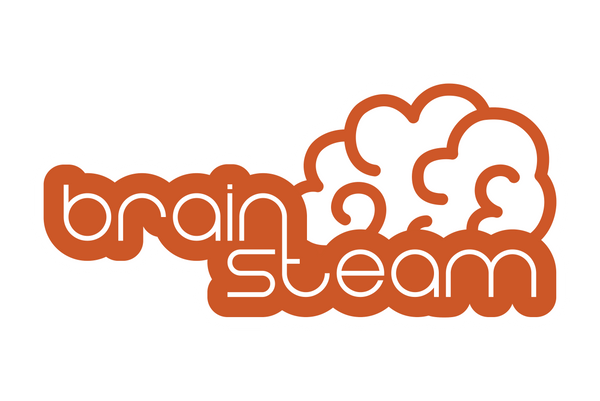- Introduction
- Understanding STEM Education
- The Importance of STEM Learning
- 3.1 Benefits of STEM Education
- STEM Learning Beyond the Classroom
- 4.1 Everyday Applications of STEM
- 4.2 Hands-on Learning Opportunities
- Examples of STEM in Everyday Life
- 5.1 Engineering Marvels in Daily Objects
- 5.2 Scientific Concepts in Nature
- 5.3 Mathematical Problem Solving in Daily Tasks
- Encouraging STEM Learning at Home
- 6.1 Creating a STEM-Rich Environment
- 6.2 Incorporating STEM into Daily Activities
- Utilizing Technology for STEM Education
- 7.1 Educational Apps and Websites
- 7.2 Virtual Laboratories and Simulations
- Conclusion
- FAQs
Introduction
In the modern world, the significance of STEM (Science, Technology, Engineering, and Mathematics) education cannot be overstated. Beyond the confines of the classroom, there exists a vast array of opportunities for individuals to engage with STEM concepts in their everyday lives. This article delves into the myriad of possibilities for exploring STEM learning opportunities beyond traditional educational settings.
Understanding STEM Education
STEM education integrates concepts from science, technology, engineering, and mathematics into a cohesive learning framework. It emphasizes critical thinking, problem-solving, and creativity, preparing individuals for success in an increasingly technology-driven world.
The Importance of STEM Learning
STEM education offers numerous advantages, both for individuals and society as a whole.
Benefits of STEM Education
- Enhanced problem-solving skills
- Improved innovation and creativity
- Preparation for future careers in STEM fields
- Addressing real-world challenges through scientific inquiry and technological advancements
STEM Learning Beyond the Classroom
While schools play a vital role in fostering STEM education, learning opportunities extend far beyond the confines of educational institutions.
Everyday Applications of STEM
STEM concepts permeate everyday life, from the technology in smartphones to the engineering principles behind infrastructure. Recognizing these applications can help individuals appreciate the relevance of STEM in their daily routines.
Hands-on Learning Opportunities
Engaging in hands-on activities allows individuals to apply theoretical knowledge to practical situations. Building structures, conducting experiments, and solving puzzles are just a few examples of how STEM learning can be interactive and enjoyable.
Examples of STEM in Everyday Life
STEM principles manifest themselves in various aspects of everyday life, often in ways that may go unnoticed.
Engineering Marvels in Daily Objects
Consider the engineering marvels present in commonplace objects such as bridges, vehicles, and household appliances. Each of these items relies on principles of engineering and design to function effectively.
Scientific Concepts in Nature
Nature provides a wealth of opportunities to explore scientific phenomena, from the physics of motion to the biology of ecosystems. Observing natural processes can spark curiosity and appreciation for the intricacies of the natural world.
Mathematical Problem Solving in Daily Tasks
Mathematics plays a crucial role in numerous daily tasks, including budgeting, cooking, and measuring. By applying mathematical concepts in practical contexts, individuals can develop a deeper understanding of mathematical principles.
Encouraging STEM Learning at Home
Parents and caregivers play a vital role in nurturing children's interest in STEM subjects. Creating a supportive environment at home can inspire curiosity and exploration.
Creating a STEM-Rich Environment
Stocking the home with books, games, and toys that encourage scientific inquiry and experimentation can foster a love for STEM from a young age. Additionally, engaging in STEM-related activities as a family can strengthen bonds and promote learning.
Incorporating STEM into Daily Activities
Simple everyday tasks, such as gardening, cooking, or building projects, can provide valuable opportunities to engage with STEM concepts. Encouraging children to ask questions and explore potential solutions fosters critical thinking skills and creativity.
Utilizing Technology for STEM Education
In an increasingly digital world, technology offers unparalleled resources for STEM education.
Educational Apps and Websites
Numerous educational apps and websites cater to STEM learning, providing interactive lessons, quizzes, and tutorials on various topics. These resources make learning accessible and engaging for learners of all ages.
Virtual Laboratories and Simulations
Virtual laboratories and simulations allow individuals to conduct experiments and explore scientific phenomena in a virtual environment. These tools provide hands-on learning experiences without the need for expensive equipment or laboratory facilities.
Conclusion
STEM education extends far beyond the walls of the classroom, offering countless opportunities for exploration and discovery in everyday life. By recognizing the relevance of STEM concepts in their surroundings, individuals can cultivate a deeper appreciation for the world around them and develop the skills needed to thrive in an increasingly complex society.
FAQs
- How can parents encourage STEM learning at home?
- Parents can encourage STEM learning at home by providing access to educational resources, engaging in hands-on activities, and fostering a supportive learning environment.
- What are some examples of everyday STEM applications?
- Examples include using technology such as smartphones, observing scientific phenomena in nature, and applying mathematical concepts to daily tasks.
- How does STEM education benefit society?
- STEM education fosters innovation, addresses real-world challenges, and prepares individuals for future careers in STEM fields, contributing to societal progress and development.
- Are there any recommended STEM educational apps?
- Yes, there are numerous STEM educational apps available, catering to a wide range of ages and interests. Some popular options include Khan Academy, Scratch, and Duolingo.
- Why is hands-on learning important in STEM education?
- Hands-on learning allows individuals to apply theoretical knowledge to practical situations, reinforcing understanding and fostering problem-solving skills.

